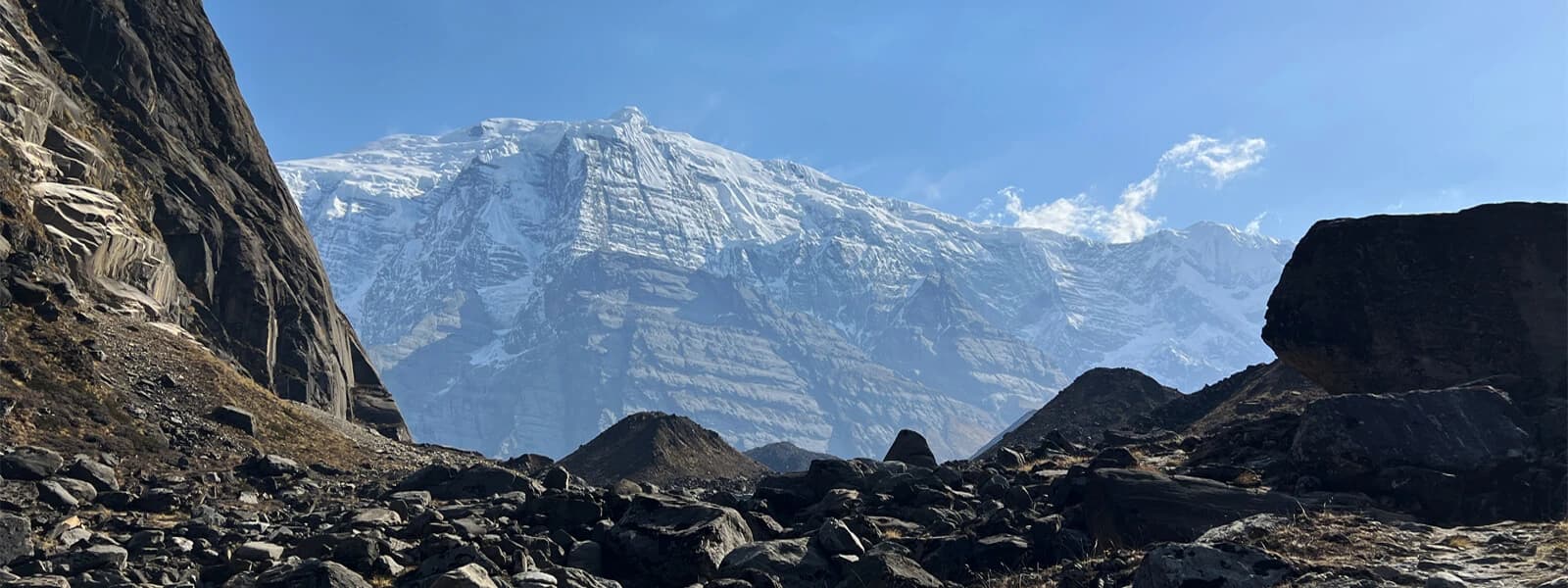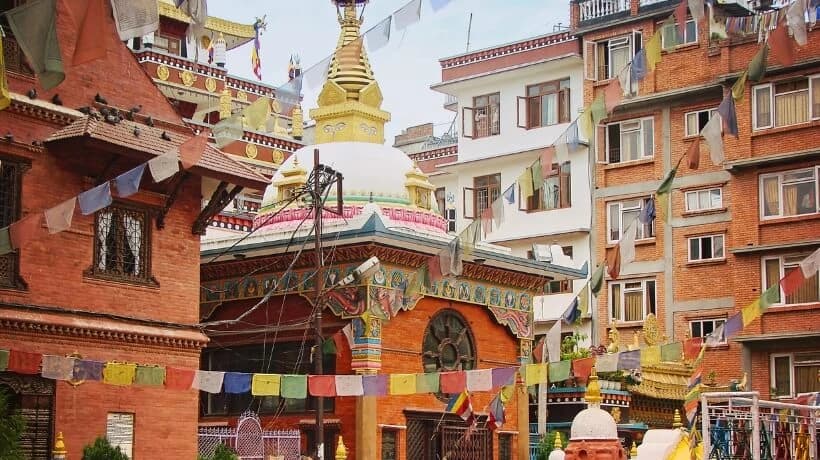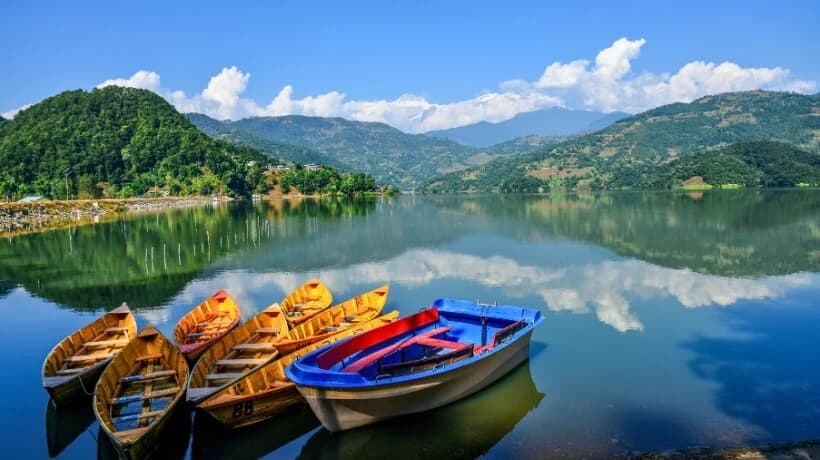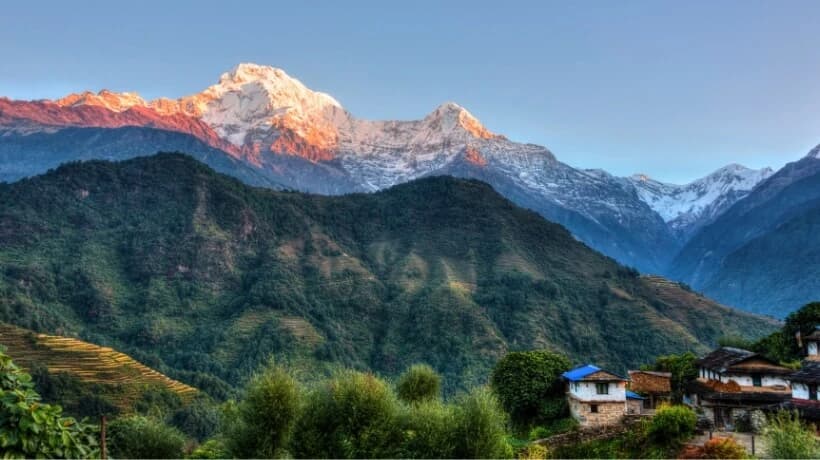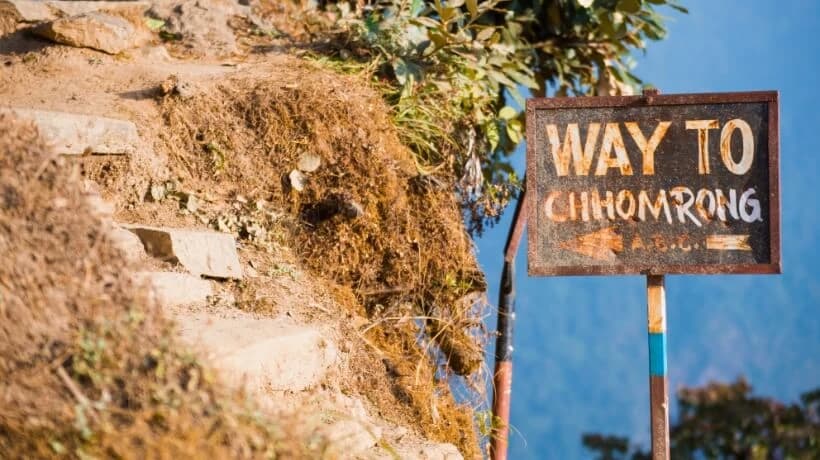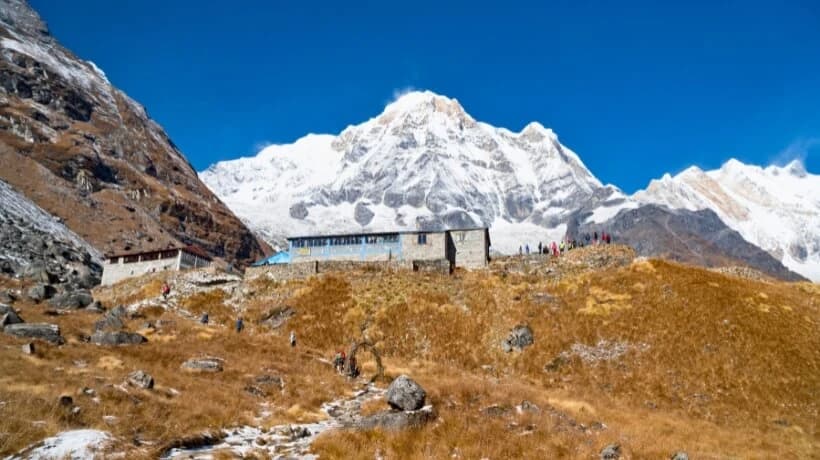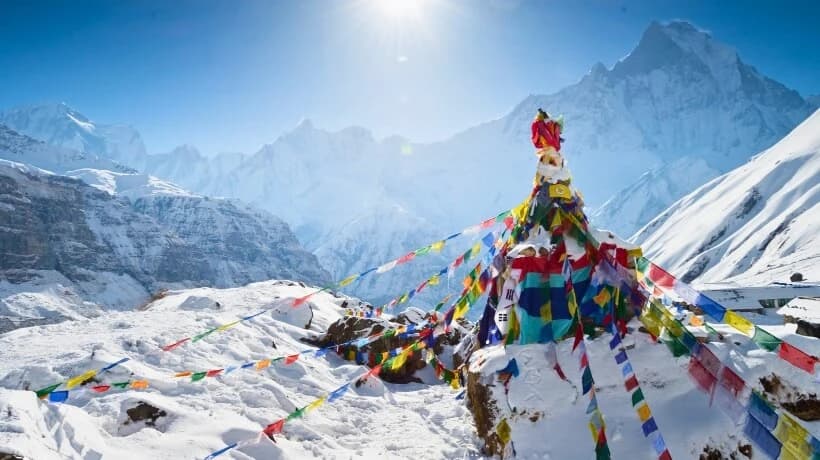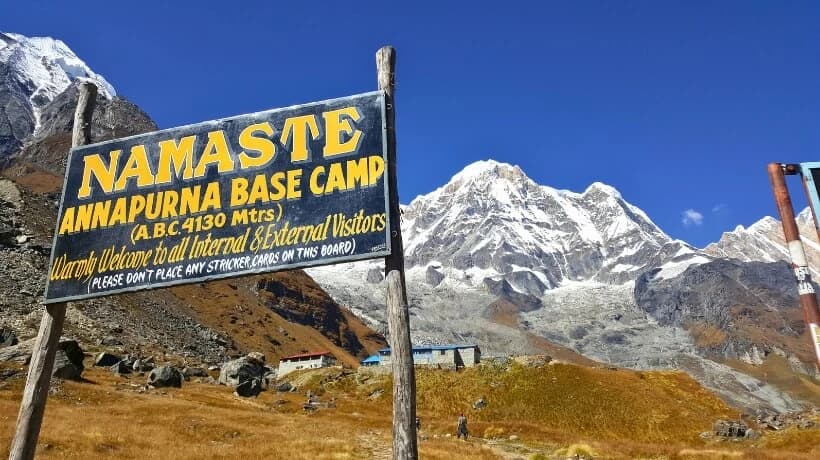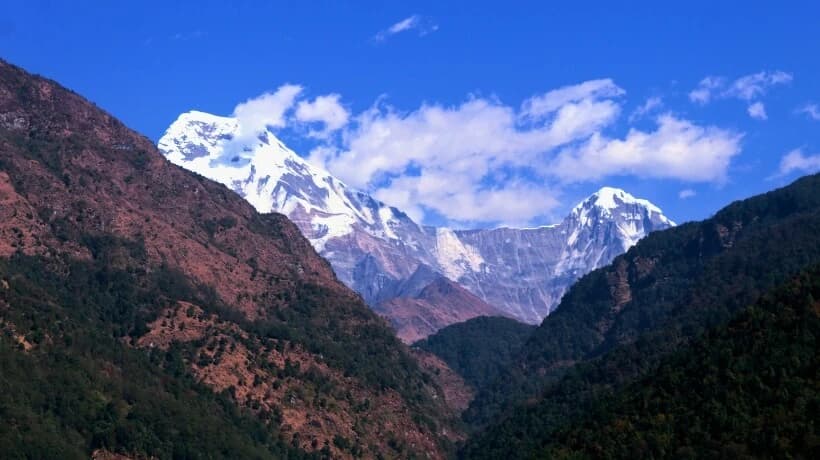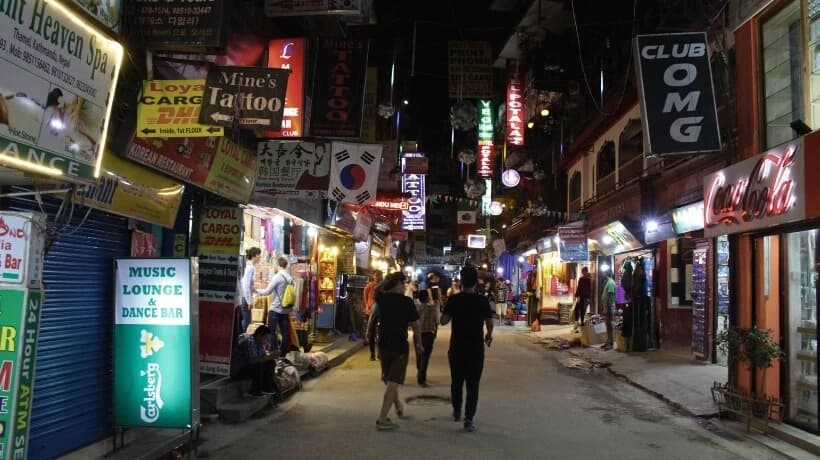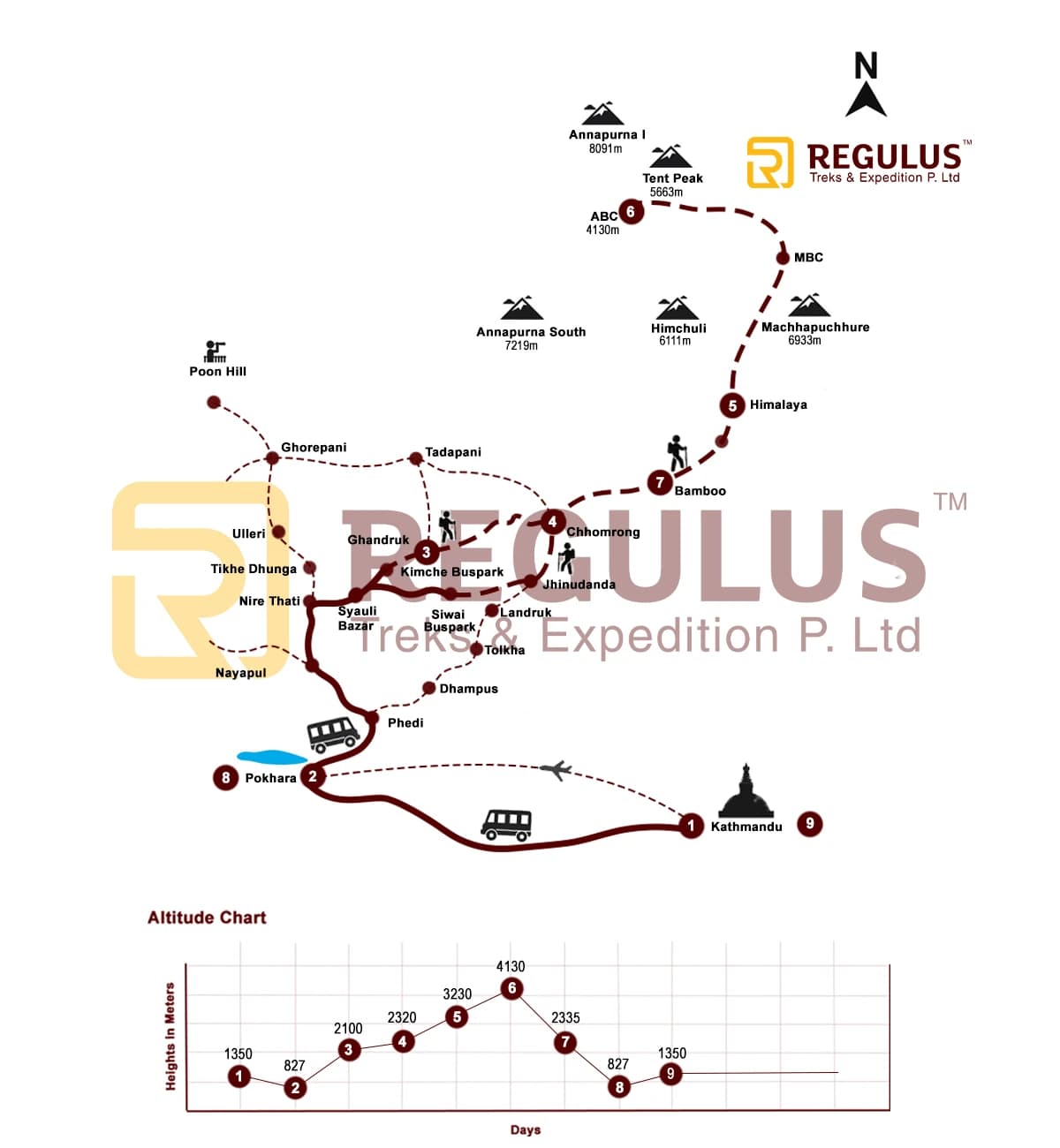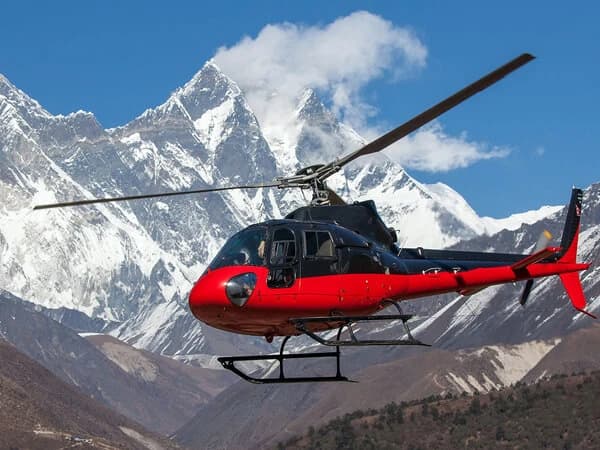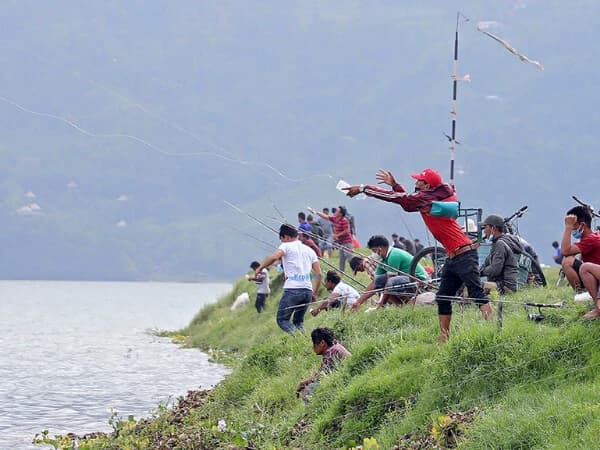Annapurna Base Camp short trek is a tailored program of the standard ABC 14-day trek. This trekking program is perfect for young and fit individuals who can walk long hours. Likewise, it is also a budget-friendly trek package, and you can complete it in less than 10 days. The journey allows you to explore the wilderness of the Annapurna Sanctuary and witness surreal mountain vistas.
The Annapurna Base Camp short trek takes travelers on an adventurous hike through the Annapurna Himalayas. You will walk up to the base camp of the tenth tallest mountain on Earth, Mount Annapurna (8,091 m/26,545 ft), on this trek. Not only that, the trail also offers views of Mt. Dhaulagiri (8,167 m/26,795 ft), the seventh-highest mountain on Earth.
If you are looking for a quick trip in the Himalayas, then the Annapurna Base Camp Trek (9 days) is one of the fantastic options. The trekking route is moderately challenging, so you can tackle it with a bit of physical preparation. Likewise, there is no requirement for previous high-altitude experience to join the short ABC trek.
Highlights
- Witness stunning views of the seventh and tenth-highest mountains in the world
- A perfect short Annapurna Base Camp trek itinerary for trekkers bound by time
- Traverse through lush forests and beautiful mountain villages, enjoying diverse landscapes
- Meet with different communities and get to see their daily lifestyle
- Come across many species of flowers, birds, and butterflies along the trail
- Cross-thrill suspension bridges and enjoy the serenity of the Annapurna Himalayas
- Spend a night at the Annapurna Base Camp and enjoy natural hot springs
- Explore Kathmandu and Pokhara, the two biggest cities in Nepal
What to expect during this trek?
This multiple-day hike allows trekkers to escape from the sounds of the city and rejuvenate their souls and minds. The Annapurna Base Camp short trek is doable but not easy. So, it will challenge your mind as you traverse diverse climatic zones, following rugged terrain. You will enjoy nature, unwind, and explore picturesque villages.
Spend your first night in Ghandruk village (1,940 m/6,364 ft), home to Gurungs and Magars. As the trail continues, you will meet with many other communities like Chhetris, Brahmins, and Thakalis. Get to see their lifestyle and relish their warm hospitality. With the rise in elevation, the services in the lodges get limited and expensive.
Incredible mountain views and diverse scenery make the trek even more fantastic. Apart from Annapurna and Dhaulagiri, you will see Mt. Nilgiri (7,061 m/23,166 ft), Mt. Fishtail (6,993 m/22,943 ft), Tukuche Peak (6,920 m/22,703 ft), Tilicho Peak (7,134 m/23,406 ft), Hiunchuli Himal (6,441 m/21,132 ft), Mt. Gangapurna (7,455 m/24,459 ft), and numerous others.
The Annapurna Base Camp short trail is inside the Annapurna Conservation Area. The trekking route goes through forests of rhododendron, pine, oak, bamboo, etc. Discover many alpine flora and vegetation. Likewise, you may get to see wildlife and different species of birds and butterflies on the way.
Unlike the Everest Base Camp trek, you will spend the night at the Annapurna Base Camp (4,130 m/13,550 ft) during this trek, which makes it much more special. The trail also passes by the Machhapuchhre Base Camp, and you may get to enjoy natural hot springs if you pass by Jhinu Danda.
Annapurna Base Camp short-trek itinerary
The Annapurna Base Camp short trek starts with a drive from Kathmandu to Pokhara along winding, lush hills. Pokhara is the gateway to the Annapurna region and is very loved by tourists. From here, you will drive to Nayapul and trek to Ghandruk. The trail then ascends to the Himalaya Hotel via Chhomrong village.
Further, enter the Annapurna Sanctuary and follow a rugged, narrow trail to the Annapurna Base Camp. Spend a night at the base camp and wake up the next morning, enjoying a jaw-dropping sunrise. From here, the trail descends to Siwai via Bamboo and takes you back to Pokhara. This itinerary is short but gives you ample time to acclimatize.
Who can do the short Annapurna Base Camp trek 9 days?
Travelers looking for a quick ABC itinerary and limited time should consider the short Annapurna Base Camp trek. As several hours of walking are required every day, the trekkers have to be fit to join the Annapurna Base Camp short trek.
Similarly, if you have any illnesses that may be triggered by the high altitude, you should consider meeting your doctor before joining this trek. Overall, students, families, friends, solo trekkers, female trekkers, couples, and colleagues can do the Annapurna Base Camp short trek.
What preparation is required for the Annapurna Base Camp short trek?
To prepare for the Annapurna Base Camp short trek, start exercising at least 4 to 6 weeks before the trek begins. Cardio and strength training should be your major focus. It will help you build the stamina and endurance needed for the trek.
Likewise, go on regular long walks, and if possible, do a few day hikes as well. Similarly, the Annapurna Base Camp short trek also challenges you mentally. Get a better understanding of the trail and facilities in the lodges to not get disappointed later during the trek.
Packing for the ABC trek
We have made a packing table for the Annapurna Base Camp short trek. You will need all the things mentioned in this table during the trek. As per your budget, you can buy or rent trekking clothes and gear. Renting option is available in Kathmandu and Pokhara. Likewise, it is also better to buy clothes and gear for the trek in Nepal to get a better price.
| Trekking Clothes | Gear | Toiletries and First Aid | Miscellaneous |
| Underwear, dry tees, t-shirt, trekking shirt and pants, thermal wear, raincoat and pants, down jacket, fleece jacket, windbreaker, socks, scarf, gloves, sun cap, beanie, etc | Trekking boots, normal shoes/slipper, day pack, sleeping bag, rain cover for the bag, trekking poles, water bottle, sunglasses, etc | Sunscreen, lip balm, moisturizer, wet wipes, sanitizer, toothbrush & paste, soap, shampoo, comb, bandage and spray for sprained joints, band-aid, cotton, insect repellent, antiseptic cream, electoral powder, general medicine, etc |
Adapter, spare batteries, power bank, charger, camera, LED torch, traveler knife, passport, visa, travel insurance, permits, photo, cash, snacks, water purification tablets, journal & pen, etc. |
Are you ready for a once-in-a-lifetime experience? Why trek to Annapurna Base Camp with us?
Trekking in the Himalayas might sound like a big thing, and it is, but with our support, you can do any trek, including the Annapurna Base Camp short trek, without any worries. Our team will organize the trek for you and your loved ones. We will arrange the logistics and permits.
While we take care of all the details, you can focus on preparing for the trek and enjoying it. During the Annapurna Base Camp short trek booking, our team will assess your fitness and help you get ready. Feel free to contact us with any questions.
Not to mention, our Annapurna Base Camp short trek price is the best in the market. You can do this 9-day trek forjust USD 990 per person. Moreover, we are giving a seasonal discount, so you can book Annapurna Base Camp short trek 2024/2025 for just USD 790 per person. We are transparent with our prices, and there are no hidden costs.


